May 25 - 31, 2014: Issue 164
Pittwater Online News receives a lot of information from various sources each week. For Your Interest and Bemusement:
Gemfish – Proposal to List as Threatened Species – Have Your Say
Notice of determination - Gemfish proposed listing as a vulnerable species.

The Fisheries Scientific Committee (FSC) has made a proposed determination (PDF 58.7 KB) to list Gemfish (Rexea solandri) in the Threatened Species Schedules of the Fisheries Management Act 1994.
In accordance with criteria prescribed by the Fisheries Management (General) Regulation 2010, the FSC reviewed information and found that the Gemfish is facing a high risk of extinction in NSW in the medium-term future, and the species is eligible to be listed as Vulnerable in Part 1 of Schedule 5 of the Act.
The committee invites written submissions on the proposed determination which should be forwarded to:
Email: fsc@dpi.nsw.gov.au
Post: Fisheries Scientific Committee, c/- NSW Department of Primary Industries, PO Box 1305, CROWS NEST NSW 1585
Submissions must be received before 6:00 pm on Friday 13 June 2014.
Please note that all submissions may be made public unless confidentiality is specifically requested.
For further information contact the FSC's Executive Officer by emailing: fsc@dpi.nsw.gov.au
See all documents at:www.epa.nsw.gov.au/waste/wasteregconsultation.htm#form

Crown Lands Legislation White Paper - NSW Government invites submissions on the Crown Lands Legislation White Paper
The NSW Government recently undertook a comprehensive review of all the legislation that regulates Crown land. The Government plans to develop consolidated, streamlined legislation to underpin the management of Crown land in the future. The White Paper contains proposals to develop one new piece of legislation that will replace eight existing Acts, streamline existing provisions, simplify the management of Crown reserves and reduce red tape.
The White Paper can be downloaded from the 'Consultation Website' link located at the bottom of this section.
You can submit your comments in writing to NSW Trade & Investment in any of the following ways:
Post: Crown Lands Review, NSW Trade & Investment, PO Box 2185, DANGAR NSW 2309
Email: Submit your feedback using the 'Crown Lands Information' link under 'More Information'.
The Government invites written submissions on the White Paper until 20 June 2014.
Comprehensive review of NSW Crown Land Management
As part of the NSW Government’s commitment to cutting red tape and updating legislation to improve outcomes, a comprehensive review into the management of Crown land has been completed. The Review started in June 2012, with the aim of improving management of Crown land and increasing the benefits and returns from Crown land to the community.
The Review report has been considered by Government and the Government’s response to the report is now available:
Crown Lands Management Review Summary and Government response (PDF 1.22MB)
Crown Lands Management Review Report 2013 (PDF 1.1MB)
White Paper
The Crown Lands Legislation White Paper contains proposals to develop one new piece of legislation that will replace eight existing Acts, streamline existing provisions, simplify the management of Crown reserves and reduce red tape.
Crown Lands Legislation White Paper (PDF 920KB)
Comments are welcome on the White Paper and will be open until 20 June 2014 at 5pm. For more information about the White paper and how to make a submission, go to White Paper consultation.
See all links to Documents pages at: HERE
Waterspout - Tampa Bay


Greenland will be far greater contributor to sea rise than expected: Work reveals long, deep valleys connecting ice cap to ocean
May 18, 2014 - Greenland's icy reaches are far more vulnerable to warm ocean waters from climate change than had been thought, according to new research by UC Irvine and NASA glaciologists. The work, published today in Nature Geoscience, shows previously uncharted deep valleys stretching for dozens of miles under the Greenland Ice Sheet.
The bedrock canyons sit well below sea level, meaning that as subtropical Atlantic waters hit the fronts of hundreds of glaciers, those edges will erode much further than had been assumed and release far greater amounts of water.
Ice melt from the subcontinent has already accelerated as warmer marine currents have migrated north, but older models predicted that once higher ground was reached in a few years, the ocean-induced melting would halt. Greenland's frozen mass would stop shrinking, and its effect on higher sea waters would be curtailed.
"That turns out to be incorrect. The glaciers of Greenland are likely to retreat faster and farther inland than anticipated - and for much longer - according to this very different topography we've discovered beneath the ice," said lead author Mathieu Morlighem, a UCI associate project scientist. "This has major implications, because the glacier melt will contribute much more to rising seas around the globe."
To obtain the results, Morlighem developed a breakthrough method that for the first time offers a comprehensive view of Greenland's entire periphery. It's nearly impossible to accurately survey at ground level the subcontinent's rugged, rocky subsurface, which descends as much as 3 miles beneath the thick ice cap.
Since the 1970s, limited ice thickness data has been collected via radar pinging of the boundary between the ice and the bedrock. Along the coastline, though, rough surface ice and pockets of water cluttered the radar sounding, so large swaths of the bed remained invisible.
Measurements of Greenland's topography have tripled since 2009, thanks to NASA Operation IceBridge flights. But Morlighem quickly realized that while that data provided a fuller picture than had the earlier radar readings, there were still major gaps between the flight lines.
To reveal the full subterranean landscape, he designed a novel "mass conservation algorithm" that combined the previous ice thickness measurements with information on the velocity and direction of its movement and estimates of snowfall and surface melt.
The difference was spectacular. What appeared to be shallow glaciers at the very edges of Greenland are actually long, deep fingers stretching more than 100 kilometers (almost 65 miles) inland.
"We anticipate that these results will have a profound and transforming impact on computer models of ice sheet evolution in Greenland in a warming climate," the researchers conclude.
"Operation IceBridge vastly improved our knowledge of bed topography beneath the Greenland Ice Sheet," said co-author Eric Rignot of UC Irvine and NASA's Jet Propulsion Laboratory. "This new study takes a quantum leap at filling the remaining, critical data gaps on the map."
M. Morlighem, E. Rignot, J. Mouginot, H. Seroussi, E. Larour.Deeply incised submarine glacial valleys beneath the Greenland ice sheet. Nature Geoscience, 2014; DOI:10.1038/ngeo2167 Photo: Aerial view of greenland ice sheet. Credit: © Wollwerth Imagery / Fotolia
Up close with a Yellow-tailed Black-Cockatoo - By BIBY TV - Published on 23 May 2014
This video is about Up close with a Yellow-tailed Black-Cockatoo
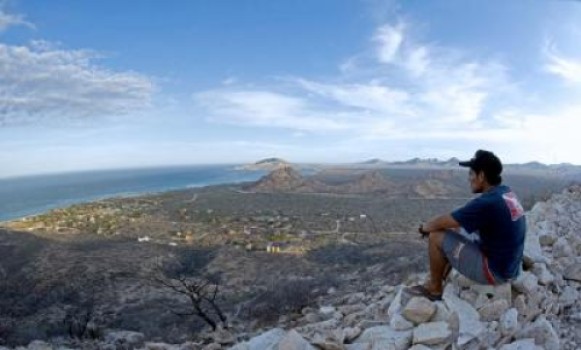
Site of mega-development project in Mexico is a biodiversity hotspot
May 19, 2014 - Cabo Pulmo is a close-knit community in Baja California Sur, Mexico, and the best preserved coral reef in the Gulf of California. But the lands adjacent to the reef are under threat from a mega-development project, 'Cabo Dorado,' should construction go ahead. Scientists at the University of California, Riverside have published a report on the terrestrial biodiversity of the Cabo Pulmo region that shows the project is situated in an area of extreme conservation value, the center of which is Punta Arena, an idyllic beach setting proposed to be completely cleared to make way for 20,000+ hotel rooms.
"Until recently, the biological value of the lands adjacent to the coral reef of Cabo Pulmo had remained a mystery," said UC Riverside's Benjamin Wilder, who helped produce the report. "We now know that these desert lands mirror the tropical waters in importance. This desert-sea ecosystem is a regional biodiversity hotspot."
According to Wilder, if the Cabo Dorado project proceeds as planned, the regionally endemic plant species and vegetation of Punta Arena will be made extinct.
"Forty-two plants and animals on the Mexican endangered species list would lose critical habitat, two recently described plant species only known from Punta Arena would be lost entirely, and development of the sand dunes of Punta Arena would imperil the most diverse coral reef in the Gulf of California," he said.
The report resulted from a survey conducted in November 2013 that in just a week's time documented 560 plants and animals on the land surrounding Cabo Pulmo. The report highlights the unique and ecologically important habitats of the sand spit, Punta Arena, the core zone of the pending development proposal.
The 'bioblitz' and resulting report were organized by UCR alum Sula Vanderplank, a biodiversity explorer with the Botanical Research Institute of Texas, and Wilder, a Ph.D. graduate student in the Department of Botany and Plant Sciences, with their advisor Exequiel Ezcurra, a professor of ecology at UCR. The report represents a binational collaboration of 22 scientists from 11 institutions that participated in the expedition and are the top experts on the plants, birds, mammals, and reptiles of Baja California. The survey was organized using the Next Generation of Sonoran Desert Researchers network to assemble a 'dream-team' of field biologists.
Ezcurra, the director of UC MEXUS and an acclaimed conservationist, said, "We need to take a careful look at such large scale development projects. Far too many times along the coasts of Mexico we have seen the destruction of areas of great biological importance and subsequent abandonment. By incorporating the natural wealth of the region into development initiatives we can collectively pursue a vision of a prosperous future for our communities that matches the grandeur of the regional landscape."
In the early 1990s the local community of Cabo Pulmo saw that overfishing was greatly depleting the coral reef ecosystem. The community shifted its local economy to ecotourism and non-extractive livelihoods, and lobbied the Mexican government to make the reef a national park, which was realized in 1995. Since that time there has been a more than 460 percent increase in the total amount of fish in the reserve - the most robust marine reserve in the world.
Wilder, Ezcurra and Vanderplank stress in the report that it is very important that development in this area take into account the inherent limitations of resources, especially fresh water, in a desert setting; the unique habitats found at Punta Arena and the coral reefs of Cabo Pulmo; and, perhaps most important, the local community of Cabo Pulmo.
"We were surprised to see that these desert lands mirrored the biological diversity of the adjacent coral sea," Wilder said. "Specifically we were not expecting to find such a concentration of rare and endemic taxa in the single region of Punta Arena. This unique biodiversity results from regional geologic forces that were previously un-investigated.
"The bottom line is that the scale of the proposed development, more than 20,000 hotel rooms, is completely disconnected from the ecology of this desert region," he added. "Any development in the area must account for and sustain the areas natural wealth as well as the local communities of Cabo Pulmo and the nearby town of La Ribera."
The research team has proposals pending to better understand the linkage between the desert-sea interface of this coastal area. Their aim is to further establish the value of the biological richness of Cabo Pulmo and Punta Arena.
The final report, which based on the scientific results recommends an extension of the Cabo Pulmo National Park to include Punta Arena, was delivered at a public hearing to SEMARNAT, the Mexican federal environmental department. SEMARNAT is expected to make a decision on the future of the Cabo Dorado project by June 15, 2014.
The report is available here: http://nextgensd.com/uncovering-the-dryland-biodiversity-of-the-cabo-pulmo-region/
Top: A young man overlooks his home, the coastal community of Cabo Pulmo. Credit: Octavio Aburto.
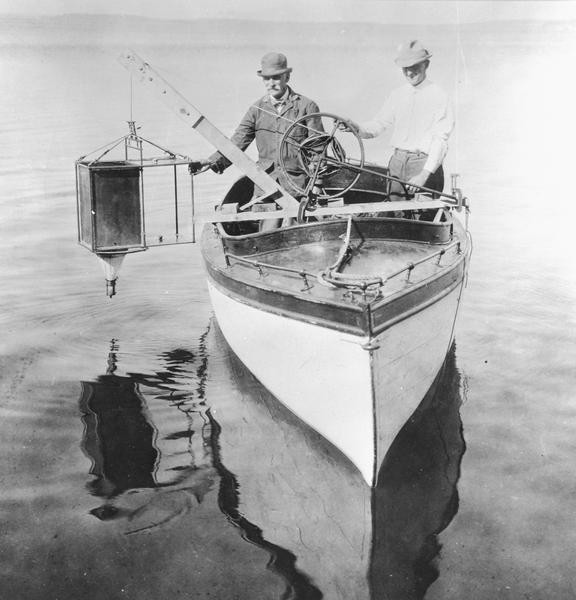
Next wave of research: Ecology, super-sized
May 20, 2014 - The University of Wisconsin-Madison, home of pioneering ecologists who studied lakes, forests, wetlands and prairies, is playing a key role in the next wave of ecological research: large teams of scientists confronting the dilemma of a changing climate on a shrinking planet. But where UW-Madison's Edward Birge and Chancey Juday, considered the founders of freshwater science, once studied lakes one by one, UW-Madison scientists are now leading several large-scale ecological investigations.
The university, through its Trout Lake Station in Boulder Junction, Wisconsin, has played a pivotal role in the Global Lake Ecological Observatory Network (GLEON), an international network that has placed observation buoys at more than 100 lakes. The 24/7 nature of data collection is essential, says Tim Kratz, director of Trout Lake and a GLEON founder. "One difficulty in studying lakes is that many organisms are very short-lived, and the environment can change quickly."
Kratz says that when sensors that could ride a buoy and continuously send data to publicly accessible databases became available, "I thought, 'Why should everybody have to go through the same learning curve?'"
GLEON is a grassroots network of scientists and volunteers from 46 countries who gather data for their own purposes. Their records are being assembled to compare lakes of various sizes, located in different geographic or social settings and climates, Kratz says. For example, the project has discovered the release of greenhouse gases is controlled differently in large lakes versus small ones.
On land, PalEON (the Paleo-Ecological Observatory Network) is looking backward to see forward, assembling long-term records from lake sediments and other natural archives to build large-scale reconstructions of forest and climate history that support better predictions of future changes in climate and land cover. Forests can either supply carbon to the atmosphere or remove it, says UW-Madison geography Professor Jack Williams, director of the Nelson Center for Climatic Research.
"Some ecosystem models predict that forests will store more carbon over this century, but others say they will release more. The question matters because forests store such a vast amount of carbon and because carbon dioxide is the major greenhouse gas and therefore a major regulator of earth's temperature. We just don't know: Will forests multiply or mitigate climate change?"
The Wisconsin scientists are well versed in the multiple methods used to document past forests and climates, including isotopes inside decaying plant material, pollen and charcoal trapped in lake sediments, historic land surveys and tree rings. All reveal the change of conditions through time, and are helping track the poorly known history of the great forest that stretched from Minnesota to New York and New England.
PalEON is an 11-institution network headed by the University of Notre Dame, in which UW-Madison plays a leading role, Williams says. "With our traditional strengths in field and laboratory ecology and in building large-scale data syntheses, we can carry a heavy burden in the effort to map the changes in North American forests over the last thousand years, up through the present."
Williams, who heads Madison's participation in PalEON, says his group is filling in the blanks by assembling data from public land surveys, which show forest composition at the time of settlement, and pollen that sank to the bottom of lakes, which tracks the changing abundances of plants and trees around the lake.
"We're pollen whisperers," says Simon Goring, a postdoctoral fellow in geography, who notes that pollen records can extend back tens of thousands of years and can provide snapshots of forest composition from one decade to the next.
PalEON is getting information about the early 1800s by reanalyzing records that show forest density and composition, taken by federal surveyors who mapped Wisconsin and other parts of the Northwest Territories. Much of the Wisconsin data has been assembled by David Mladenoff in the Department of Forest and Wildlife Ecology, says Williams. "We are building on 20 years of David's work for Wisconsin, and adding that to studies from Minnesota and Michigan, to stitch together a wholesale map of changing land cover that will stretch to the Atlantic.
"It's kind of amazing; we take records gathered by people using sextants and chains, and feed it into databases that tell us about the landscape before Europeans made drastic changes to it."
"The pre-European settlement forest was much more mature with hickory, walnut, oak and beech," says Goring, compared to modern upper Midwestern forests, which look like young forests that follow fire or other disturbance, with more poplar and white birch.
The ultimate goal is to flesh out a deeper history of the effects of climate variability on forests, which are essential for the ecosystem models that explore the feedbacks between forest ecosystems and climate change, Williams says. "Having this rich history will help us run the various models and check them against our long-term data, and improve the models as necessary. This has long been done very successfully with weather forecasting and climate models, and it's now being done with terrestrial ecosystem models."
The new emphasis on large-scale ecosystem research "is the next logical step for a university with a long history of studying changes in climate due to human activity and other causes," says Williams. "Reid Bryson was one of the first to look seriously at climate change, and John Kutzbach produced a groundbreaking set of studies identifying the key causes of past climate change. Thompson Webb, my advisor at Brown, got his Ph.D. here in Madison in 1971 and has been studying paleoclimate ever since."
Ecological history - on both land and water - is no longer the province of the lone wolf, no matter how talented and dedicated, Williams says. "I really see it as 'ecology grows up, and grows out.' We are looking at bigger questions, a longer time scale, at wider horizons, and that requires bigger teams and more interdisciplinary work."
The above story is based on materials provided by University of Wisconsin-Madison. The original article was written by David Tenenbaum.
Above Photo: Pioneering University of Wisconsin lake ecologists Edward A. Birge (left) and Chancey Juday with a plankton trap in Lake Mendota, Madison, Wisconsin, in 1917. UW-Madison scientists are now engaged in much larger ecological collaborations with researchers from around the nation and world. Credit: UW-Madison Archives
Fighting bushfires with explosives - clip 2 - Published on 21 May 2014 by UNSWTV
A shadowgraph representation of the blast, which involves positioning a simple cut-off filter in front of the camera to take advantage of the way light (in this case a very bright lamp shining into the test area) bends through air that is hot (around the flame) or suddenly changes in density (across the blast wave). Some light makes it into the camera while the light that has bent the most does not. The fact that light refracts like this is what makes us see a "mirage" of sunlight shimmering on a hot road on a very warm day, and in the case of this experiment it allows us to see something that is normally near-invisible to the naked eye - an explosive blast and the jets and vortices it produces in the air.
From a series of tests conducted at the Energetic Materials Research Testing Center in New Mexico to determine whether explosives can be used to extinguish an out-of-control bushfire.
Dr Graham Doig, of UNSW Australia's School of Mechanical and Manufacturing Engineering, is conducting the research.
Park Bench Fishermen
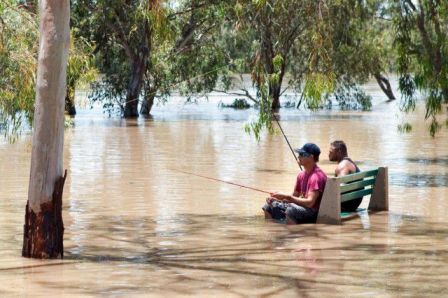
Tagging juvenile white shark - Published on 18 May 2014
This video shows our scientists, supported by NSW Department of Primary Industries staff, fitting a juvenile white shark with an internal acoustic tag at Port Stephens, New South Wales.
The results are in and it's time to find a NAPLAN alternative by UWS
NAPLAN, the national test designed to help improve the literacy and numeracy skills of school children is no longer in the best interest of young Australians, according to the latest report commissioned by the Whitlam Institute within the University of Western Sydney.
The report, The Experience of Education, was undertaken for the Whitlam Institute by Professor Johanna Wyn and her colleagues at the Youth Research Centre at the Melbourne Graduate School of Education.
NAPLAN has taken on a life of its own, despite claims that it is no more than a simple diagnostic tool, the researchers say. It has spawned a small industry in coaching and in the production and sale of NAPLAN guides, sample tests and resources.
Over the last three years the Whitlam Institute has sought to examine the impacts of ‘high stakes’ testing on school students and their families through a progression of studies beginning with the original international literature review (opens in new window) (January 2012) and followed by a survey of teachers (opens in new window) (November 2012) and a survey of parents (opens in new window) (November 2013).
This latest Whitlam Institute report, possibly the most significant to date, throws further light on both attitudes towards and implications of NAPLAN.
In 2013 Professor Johanna Wyn’s team spent time in five communities (three in Victoria and two in NSW) speaking to Principals, teachers and parents. Most importantly, for the first time, they also interviewed students themselves.
The report’s authors conclude that “Although NAPLAN testing is designed to improve the quality of education children and young people receive in Australia, its implementation, uses and misuses mean that it undermines quality education, and it does harm that is not in the best interests of Australian children.”
Eric Sidoti, Director of the Whitlam Institute, says it is the time to rethink NAPLAN and initiate a national debate on alternative approaches.
“There is no escaping the seriousness of the report’s conclusion. Any educational reform, regardless of good faith or noble intent that is not in the best interests of the students is a failed reform,” he says.
“It is time to open the debate. We need to ensure that the development of literacy and numeracy in our schools is assessed and reported upon in a way that enhances rather than constrains pedagogy, that evokes confidence and enthusiasm among educators rather than resignation that challenges and encourages learning rather than induces widespread anxiety and stress among students.”

Twitter Tool Shows A Real-Time View of Our Emotions - 19 May 2014

Researchers from CSIRO have unveiled a new online tool developed for the Black Dog Institute, in partnership with Amazon Web Services, called 'We Feel' which analyses the words from millions of tweets to display a real-time view of our emotions.
The tool will help researchers understand how our emotions fluctuate over time due to changes in social, economic and environmental factors such as weather, time of day, news of a natural disaster or announcements about the economy.
We Feel will help Black Dog Institute's researchers who are world leaders in the diagnosis; treatment and prevention of mood disorders such as depression, verify whether the large and fast sample of information coming from Twitter can accurately map our emotions. It is hoped the tool could help to understand how our collective mood changes, help monitor community mental health and predict where services needed to be assigned.
"We Feel looks for up to 600 specific words in a stream of around 27 million tweets per day and maps them to a hierarchy of emotions which includes love, joy, surprise, anger, sadness and fear," Research Leader in language and social computing at CSIRO's Digital Productivity and Services Flagship Dr Cecile Paris said.
"You can explore emotional trends on a minute by minute time scale, across locations around the globe and gender to further refine the results."
Professor Helen Christensen, Executive Director of the Black Dog Institute said the We Feel program represented the world's first foray into understanding how social media can be used to detect poor mental health and observe shifts according to time and place.
"The power of this information cannot be underestimated," Professor Christensen said.
"Currently, mental health researchers and associated public health programs use population data that can be over five years old.
"Should the real-time data gained using this incredible tool prove accurate, we will have the unique opportunity to monitor the emotional state of people across different geographical areas and ultimately predict when and where potentially life-saving services are required."
The tool has already picked up a spike in the public's emotional response to last week's Budget and will continue to collect data that will be analysed by Black Dog's researchers.
"To help us cope with the enormous volume of tweets coming down the pipe, up to 32,000 per minute, we've leveraged Amazon Web Services' Kinesis platform, a fully managed big data service for real-time processing of streaming big data at massive scale. Without this we wouldn't have been able to process the tweets in real time," Dr Paris said.
Teresa Carlson, Vice President, Worldwide Public Sector at Amazon Web Services said the Kinesis platform offed users the flexibility to collect, store, analyse and share data en masse, efficiently.
"We're very pleased to be part of this amazing project; Amazon Kinesis-enabled applications can power real-time dashboards, generate alerts and drive real-time business decisions," Ms Carlson said.
The We Feel tool is also available to view for a limited time athttp://wefeel.csiro.au
Researchers and developers are also welcome to explore and mash up the data via the We Feel application programming interface (API) http://wefeel.csiro.au/#/api.

Mars mineral could be linked to microbes
May 20, 2014 – Scientists from the Australian National University have discovered that the earliest living organisms on Earth were capable of making a mineral that may be found on Mars.
The clay-mineral stevensite has been used since ancient times and was used by Nubian women as a beauty treatment, but scientists had believed deposits could only be formed in harsh conditions like volcanic lava and hot alkali lakes.
Researchers led by Dr Bob Burne from the ANU Research School of Earth Sciences have found living microbes create an environment that allows stevensite to form, raising new questions about the stevensite found on Mars.
"It's much more likely that the stevensite on Mars is made geologically, from volcanic activity," Dr Burne said.
"But our finding - that stevensite can form around biological organisms - will encourage re-interpretation of these Martian deposits and their possible links to life on that planet."
Dr Burne and his colleagues from ANU, University of Western Australia and rock imaging company Lithicon, have found microbes can become encrusted by stevensite, which protects their delicate insides and provides the rigidity to allow them to build reef-like structures called "microbialites."
"Microbialites are the earliest large-scale evidence of life on Earth," Dr Burne said. "They demonstrate how microscopic organisms are able to join together to build enormous structures that sometimes rivalled the size of today's coral reefs."
He said the process still happens today in some isolated places like Shark Bay and Lake Clifton in Western Australia.
"Stevensite is usually assumed to require highly alkaline conditions to form, such as volcanic soda lakes. But our stevensite microbialites grow in a lake less salty than seawater and with near-neutral pH."
One of the paper's authors, Dr Penny King from ANU, is a science co-investigator on NASA's Mars Curiosity rover, which uncovered the presence of possible Martian stevensite.
The findings also have implications for how some of the world's largest oil reservoirs were formed.
The discovery was made using ANU-developed imaging technology licensed to Lithicon. The data was run on Raijin, the most powerful supercomputer in the Southern Hemisphere, based at the National Computational Infrastructure in Canberra.
R. V. Burne, L. S. Moore, A. G. Christy, U. Troitzsch, P. L. King, A. M. Carnerup, P. J. Hamilton. Stevensite in the modern thrombolites of Lake Clifton, Western Australia: A missing link in microbialite mineralization? Geology, 2014; DOI:10.1130/G35484.1 Above: The late Dr Linda Moore sampling microbialites. Credit: Bob Burne
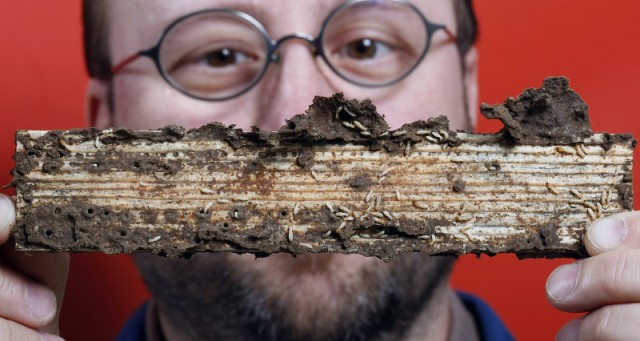
Termite genome lays roadmap for 'greener' control measures
May 20, 2014 – A team of international researchers has sequenced the genome of the Nevada dampwood termite, providing an inside look into the biology of the social insect and uncovering new genetic targets for pest control.
Michael Scharf, a Purdue University professor of entomology who participated in the collaborative study, said the genome could help researchers develop control strategies that are more specific than the broad-spectrum chemicals conventionally used to treat termite infestations.
"The termite genome reveals many unique genetic targets that can be disrupted for better termite control," said Scharf, who is the O. Wayne Rollins/Orkin Chair in Molecular Physiology and Urban Entomology. "Depending on which gene or protein that is targeted, we could disrupt termites' neurological processes, molting, digestive factors or cuticle formation. We're just limited by our imagination."
The Nevada dampwood termite is the first termite species to have its genome sequenced. While dampwood termites do not cause significant damage to buildings, they are closely related to key pests such as the eastern subterranean termite, which is the main pest species in Indiana and the Eastern U.S.
Termites are major pests of human structures, costing an estimated $40 billion in damage and control treatment each year. Having the genome in hand will enable researchers to look for common features expressed across termite species to find control targets effective for all types of termites, Scharf said.
Current termite control measures consist largely of synthetic chemical-based products, some of which are toxic to vertebrates.
"While current pesticides are very effective products, the problem is that you're injecting large volumes of them into the soil around the house," Scharf said. "It would be nice to move to a greener technology, and that's what the genome sequence could enable us to do."
Baiting termites with small quantities of treated wood that they could eat and share with colony-mates would be one such technique, he said. Newer technology such as gene silencing, which targets termite RNA to reduce the expression of critical genes, could also knock out the pests.
"With termites, you don't have to impact all of them," he said. "Targeting just a fraction of the workers could cause an entire colony to collapse."
The study also highlights genes related to chemical communication, the way in which termites "talk" to one another to signal aggression or a desire to reproduce.
"There's a lot of social strife in a termite colony, and it's got to stay cohesive to survive," Scharf said. "Chemical communication is crucial to keeping the labor force in place."
The genome could also help researchers better understand the symbiosis between termites and the more than 4,000 species of bacteria that thrive in their guts, aiding in processes such as digestion and defense. Previous studies of the termite gut were hampered by the inability to distinguish between termite and microbe genes. Understanding the gut biology is important to Scharf, who is researching the enzymes that termites use to digest wood. Identifying these enzymes could lead to novel methods of producing cellulosic biofuels.
"The genome provides a well-defined roadmap that could help us find the right cocktail of enzymes to break wood down into its simple sugars," he said. "It takes a lot of the guesswork out."
The study was published in Nature Communications Tuesday (May 20).
Nicolas Terrapon ; Cai Li ; Hugh M. Robertson ; Lu Ji ; Xuehong Meng ; Warren Booth ; Zhensheng Chen ; Christopher P. Childers ; Karl M. Glastad ; Kaustubh Gokhale ; Johannes Gowin ; Wulfila Gronenberg ; Russell A. Hermansen ; Haofu Hu ; Brendan G. Hunt ; Ann Kathrin Huylmans ; Sayed M.s. Khalil, ; Robert D. Mitchell ; Monica C. Munoz-Torres ; Julie A. Mustard ; Hailin Pan ; Justin T. Reese ; Michael E. Scharf ; Fengming Sun ; Heiko Vogel ; Jin Xiao ; Wei Yang ; Zhikai Yang ; Zuoquan Yang ; Jiajian Zhou ; Jiwei Zhu ; Colin S. Brent ; Christine G. Elsik, ; Michael A. D. Goodisman ; David A. Liberles ; R. Michael Roe ; Edward L. Vargo ; Andreas Vilcinskas ; Jun Wang, ; Erich Bornberg-Bauer ; Judith Korb ; Guojie Zhang, ; Jurgen Liebig. Molecular traces of alternative social organization in a termite genome. Nature Communications, May 20, 2014 DOI:10.1038/nscomms4636
Above: Michael Scharf eyes a group of eastern subterranean termites, destructive pests in Indiana and the Eastern U.S. Credit: Purdue University photo / Tom Campbell
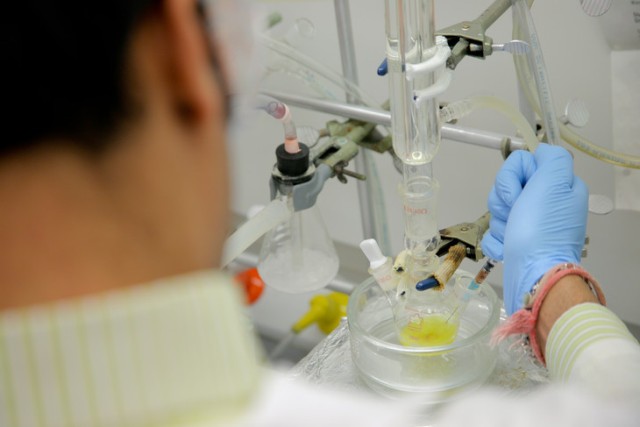
Pine bark substance could be potent melanoma drug
May 20, 2014 - A substance that comes from pine bark is a potential source for a new treatment of melanoma, according to researchers. Current melanoma drugs targeting single proteins can initially be effective, but resistance develops relatively quickly and the disease recurs. In those instances, resistance usually develops when the cancer cell's circuitry bypasses the protein that the drug acts on, or when the cell uses other pathways to avoid the point on which the drug acts.
"To a cancer cell, resistance is like a traffic problem in its circuitry," said Gavin Robertson, professor of pharmacology, pathology, dermatology, and surgery and director of the Penn State Hershey Melanoma Center. "Cancer cells see treatment with a single drug as a road closure and use a detour or other roads to bypass the closure."
Penn State researchers may have solved this problem by identifying a drug that simultaneously creates many road closures.
The researchers screened 480 natural compounds and identified leelamine, derived from the bark of pine trees, as a drug that can cause this major traffic jam in the cancer cell's circuitry.
"Natural products can be a source of effective cancer drugs, and several are being used for treating a variety of cancers," said Robertson. "Over 60 percent of anti-cancer agents are derived from plants, animals, marine sources or microorganisms. However, leelamine is unique in the way that it acts."
Leelamine could be the first of a new unique class of drugs that will simultaneously target several protein pathways. Researchers found that this drug shuts down multiple protein pathways, such as PI3K, MAPK and STAT3, at the same time in melanoma cells. Thpse pathways are involved in the development of up to 70 percent of melanomas. Protein pathways like these help cancer cells multiply and spread, so shutting them down helps kill the cells.
"The cancer cell is addicted to these pathways," Robertson said. "And when they are shut down, the bypass routes cannot be used. The result is the cancer cells die."
Leelamine works by shutting down cholesterol transport and its movement around the cancer cell. By shutting down cholesterol transport and movement, the exceptionally active survival communication that cancer cells require is shut down. The end result is death of the cancer cell. Since normal cells are not addicted to the same high levels of activity in these pathways, the drug has a negligible effect on them.
"The cholesterol in a cancer cell is not like the cholesterol in our blood that causes heart disease," said Robertson. "The cancer cells need it for the high protein pathway activity and it cannot be shut down by statins, like Lipitor, that lower serum cholesterol."
The researchers showed the results of this unique drug on cells growing in culture dishes and in tumors growing in mice. Leelamine inhibited tumor development in mice with no detectable side effects.
Researchers report their results in two back-to-back articles in a recent issue ofMolecular Cancer Therapeutics.
Leelamine is the first of a new class of potentially viable drugs for the treatment of melanoma. More research must be completed before it can be tested in humans. Penn State has a patent for this discovery and has licensed it to Melanovus Oncology for the next series of experiments to enable it to be tested in humans. Melanovus Oncology is partly owned by Penn State and Robertson.
Journal References:
R. Gowda, S. V. Madhanupantula, O. F. Kuzu, A. Sharma, G. P. Robertson.Targeting Multiple Key Signaling Pathways in Melanoma using Leelamine.Molecular Cancer Therapeutics, 2014; DOI: 10.1158/1535-7163.MCT-13-0867
O. F. Kuzu, R. Gowda, A. Sharma, G. P. Robertson. Leelamine mediates cancer cell death through inhibition of intracellular cholesterol transport.Molecular Cancer Therapeutics, 2014; DOI:10.1158/1535-7163.MCT-13-0868
Top: A researcher at Penn State Hershey purifies leelamine. Credit: Image courtesy of Penn State
Go to work to improve your mental health - 19 May 2014
Ask most people where they should learn about good mental health and they would be pretty unlikely to say their workplace. For many of us, the workplace is where we are the most stressed, anxious or depressed.
But with 60% of the population employed, and 60% of our waking hours spent working, workplaces are a prime location to base mental health education and prevention programs. Or are they?
According to Dr Sam Harvey, Consultant Psychiatrist and Head of the Workplace Mental Health Research Program at UNSW and the Black Dog Institute, the answer is a resounding yes.
“We did a systematic search across the world to identify good quality research publications that tested the impact of depression prevention programs in different workforces,” says Dr Harvey, who is also part of the School of Psychiatry.
The results of the meta-analysis, published in BMC Medicine, shows for the first time that evidence-based workplace depression prevention programs significantly reduced depression symptoms amongst employees.
“This tells us two things. Firstly, that the workplace is a viable location for providing universal mental health prevention programs, and secondly, it demonstrates the potential power of the workplace for spreading important public health messages and shows that we can become too focused on the potential negative aspects of work and work stress on mental health,” he says.
“Due to the nature of the analysis, we weren’t able to determine which interventions were most effective, although at present cognitive behavioural therapy (CBT)-based interventions have the most evidence. CBT-based interventions teach workers, either in groups or individually, to better understand their emotions, thoughts and behaviours in a range of potentially stressful situations and a variety of techniques to help them cope or adapt better.
“Overall these results provide strong evidence to support the incorporation of mental health prevention strategies in workplaces as part of ongoing efforts to reduce the unacceptably high rates of mental ill health amongst working Australians.”
Study finds readmission more likely after private hospital birth - May 21, 2014 from UWS
Babies born to a low risk mother in New South Wales private hospitals are more likely to have a health problem and be readmitted for birth related issues and further treatment in the first month than those born in a public hospital, a landmark University of Western Sydney study has found.
Professor Hannah Dahlen and Dr Charlene Thornton from the UWS School of Nursing and Midwifery, along with colleagues from the University of Sydney, examined data from over 690,000 women who gave birth in NSW to a single baby between 2000 and 2008.
The findings, published in the medical journal BMJ Open, show babies born in private hospitals were more likely to be born before 40 weeks, more likely to have some form of resuscitation at birth, and more likely to be readmitted within 28 days for problems such as feeding difficulties and breathing problems.
The study also found that despite increased rates of intervention in private hospitals, such as caesarean section, forceps and epidurals and a 20 percent lower normal birth rate, there was no difference in the death rates between the two groups.
“We have known for some time that obstetric intervention is much higher in private hospitals, but the argument has been this leads to better outcomes for babies,” says Professor Dahlen.
“NSW has one third of the nation’s births, and this study shows these procedures may be associated with increased problems for healthy women and babies.”
The study found babies born in private hospitals to low risk mothers were more likely to be treated at birth and readmitted to hospital in the first 28 days for birth trauma, jaundice, sleeping issues, feeding difficulties or respiratory conditions.
Many of these problems are associated with higher rates of medical intervention such as caesarean section and vacuum-assisted births, and led to separation between the mother and baby, a longer stay in hospital, and higher rates of readmission within 28 days.
In contrast, babies born in the public hospital system were more likely to be readmitted for problems relating to socioeconomic circumstances.
“This study should encourage Australian women to question unnecessary interventions that interfere with the birth process, as there appears to be no advantage to the baby and possible disadvantage if you are low risk.” says Professor Dahlen.
“Doctors are incredibly valuable and serve a vital service for many women giving birth, but we should make sure they provide their services where they are really needed, for women who have a high risk pregnancy or birth, as opposed to those who are low risk.”
Professor Dahlen says the study casts doubt on claims private hospitals provide enhanced services and facilities.
“There is no evidence to suggest that paying more for health in Australia guarantees a better health outcome for healthy childbearing women, as this study demonstrates,” says Professor Dahlen.
“There is also little evidence that private care is cost effective, which is important given the context of rising health costs in Australia. Pregnancy and birth for most women is a healthy process, not a disease, and countries which understand this and use their obstetricians appropriately have lower rates of intervention and excellent outcomes.”
“In fact, recent research found there was an average saving of more than $1,000 per woman who chose continuity of midwifery care compared to those who received private obstetric care or public maternity care.”
Comprehensive review shows no link between vaccinations and autism
- 19 May 2014
The first systematic international review of childhood vaccinations led by researchers from the University of Sydney has found no evidence of a link to the development of autism or autism spectrum disorders (ASDs).
The comprehensive review, published in medical journal Vaccine, examined five cohort studies involving more than 1.25 million children, an additional five case-control studies involving more than 9,920 children obtained via systematic searches of international medical databases MEDLINE, PubMed, EBASE and Google Scholar up to April 2014.
Both the cohort and case-control studies revealed no statistical data to support a relationship between childhood vaccination for the commonly-used vaccines for measles, mumps, rubella, diphtheria, tetanus and whooping cough and the development of autism or ASDs.
Paper senior author Associate Professor Guy Eslick from the Sydney Medical School said these vaccines were the ones which had received the most attention by anti-vaccination groups.
"There has been enormous debate regarding the possibility of a link between these commonly-used and safe childhood vaccinations and the supposed development of autism," Associate Professor Eslick said.
"A rising awareness of autism cases and the claimed but not proven link to childhood vaccinations has led to both an increased distrust in the trade between vaccine benefit outweighing potential risks and an opportunity for disease resurgence.
"This has in recent times become a major public health issue with vaccine-preventable diseases rapidly increasing in the community due to the fear of a 'link' between vaccinations and autism.
"This is especially concerning given the fact that there have been 11 measles outbreaks in the US since 2000, and NSW also saw a spike in measles infections from early 2012 to late 2012.
"Vaccine-preventable diseases clearly still hold a presence in modern day society, and the decision to opt out of vaccination schedules needed to be urgently and properly evaluated."
Associate Professor Eslick said to date there had been no quantitative data analysis of any relationship between autism, autism spectrum disorders and childhood vaccinations.
"Our review is the first to do so, and we found no statistical evidence to support this idea," he said.
"Our extensive international review found childhood vaccinations including measles, mumps, rubella, diphtheria, tetanus and whooping cough are not associated with the development of autism or an autism-spectrum disorder.
"Furthermore, our review found the components of the widely-used vaccines (thimerosal or mercury), nor the measles, mumps and rubella combination vaccines (MMR) are not associated with the development of autism or an autism-spectrum disorder.
"The increase in parents deciding not to vaccinate their children has substantially decreased 'herd immunity' among populations, subsequently increasing the risk of catching potentially more serious infectious diseases.
"Thus the risks incurred by not immunising a child is increasing substantially as the level of immunisation coverage in the population falls.
"The data consistently shows the lack of evidence for an association between autism, autism spectrum disorders and childhood vaccinations, regardless of whether the intervention was through combination vaccines (MMR) or one of its components, providing no reason to avoid immunisation on these grounds."
About Vaccine: Vaccine is the pre-eminent journal for those interested in vaccines and vaccination. It is the official journal of The Edward Jenner Society, The International Society for Vaccines and The Japanese Society for Vaccinology.www.elsevier.com/locate/vaccine

WHC - Respect World Heritage – Tasmanian Wilderness
The World Heritage Committee’s advisory bodies, IUCN and ICOMOS, have released their evaluation reports into the Abbott Government's plan to delist parts of Tassie’s World Heritage forests and they are damning. The IUCN confirmed the natural values of Tasmania’s forests, and both expert organisations advised the World Heritage Committee not to approve the Abbott proposal.
Visit the below links to read the reports for yourself:
IUCN - https://lists.wilderness.org.au/lt.php?id=Nh4KDgUPDwMHC1NFAwVQV04AUw9WAlE%3D
ICOMOS - https://lists.wilderness.org.au/lt.php?id=Nh4KDgUPDwMHC1JFAwVQV04AUw9WAlE%3D
In response, the World Heritage Centre has issued a draft decision NOT approving the delisting proposal.
This is great news and a step in the right direction for retaining World Heritage protection for these forests. The final decision is not made until mid-june, in Doha, Qatar. The Wilderness Society will be sending a delegation to Doha to do all we can to ensure the draft decision is adopted.
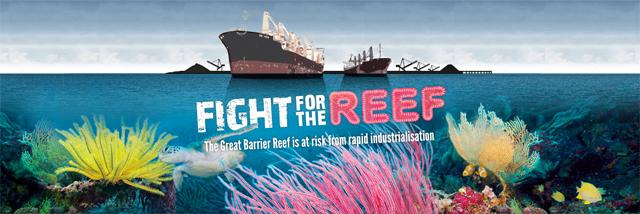
How would you cast your vote for the Reef?
It’s here. A window of opportunity has opened for the Reef…
When dredging and dumping in World Heritage waters at Abbot Point was approved earlier this year, it was a massive blow. It was evidence that the Australian Government couldn’t be trusted to protect our national icon, on their own.
Then three weeks ago, the tide turned.
UNESCO - the UN body responsible for protecting World Heritage places - released an alarming assessment of the Reef. It highlighted dumping as an unacceptable threat to the Reef - putting the Reef at risk of being listed as ‘in danger’ - the World Heritage list of shame.
Not only would this be a major embarrassment for Australia’s international reputation, but it would damage Australia’s tourism industry - worth 63,000 jobs and $6 billion per year - and the local communities that depend on it.
In just three weeks, the World Heritage Committee will hold a crucial vote that could help stop the rapid industrial development of the Reef.
For the first time, you get to vote too.
How does the vote work? YouNesco is a new initiative to make sure that the UNESCO World Heritage Committee hears from the public - not just Governments - before they make big decisions. It’s a chance to have a say on decisions that are normally made behind closed doors.
You vote through YouNesco - we package up the votes and deliver them directly to the World Heritage Committee at their meeting. This year the meeting is in Doha and Rick Leck from WWF will be there on behalf of Fight for the Reef, delivering the votes to the Committee on 16 June.
We know that the international pressure of respected bodies like UNESCO and the World Heritage Committee is vital.
This is our chance to help deliver the first step in Reef protection - a ban on dumping - before it’s too late. Let’s make it happen!
Thanks,
Felicity Wishart
on behalf of the Fight for the Reef team

Celebrate the biggest day for positive environmental action!
World Environment Day (WED) is the United Nations’ principal vehicle for encouraging worldwide awareness and action for the environment. Over the years it has grown to be a broad, global platform for public outreach that is widely celebrated by stakeholders in over 100 countries. It also serves as the ‘people’s day’ for doing something positive for the environment, galvanizing individual actions into a collective power that generates an exponential positive impact on the planet.
In support of the UN designation of 2014 as the International Year of Small Island Developing States (SIDS), WED this year will adopt SIDS in the broader context of climate change as its theme. Our objectives are to help build momentum towards the Third International Conference on SIDS in September and encourage a greater understanding of the importance of SIDS and of the urgency to help protect the islands in the face of growing risks and vulnerabilities, particularly as a result of climate change. We believe WED will be an excellent opportunity to raise a call for solidarity with the islands.
"Planet Earth is our shared island, let us join forces to protect it." - UN Secretary-General Ban Ki-moon at the launch of the 2014 International Year of Small Islands and Developing States
Public comment on final stage for the One-Stop Shop in NSW - Joint media release
The Federal Environment Minister, Greg Hunt, and the NSW Minister for Planning, Pru Goward, today released a New South Wales draft bilateral agreement on environmental approvals for public comment.
Minister Hunt said the One-Stop Shop reforms are a key Coalition election commitment that will reduce duplication of environmental assessment and approval processes between the Australian Government, states and territories.
"The Australian Government's One-Stop Shop reform has today taken a major step forward with the release of the approval bilateral agreement with New South Wales for public comment."
"Business efficiency will be improved while maintaining the strong environmental standards under federal law. This will help to grow the economy, reduce costs for business, boost productivity and create jobs."
Minister Goward said NSW and the Commonwealth are now one step closer to a more sensible system that removes the kinds of unnecessary duplication and overlap that add delays and costs without any further environmental protection.
"This is an important step, and I look forward to finalising resourcing arrangements at the time the bilateral agreement is signed.
"Having two sets of assessment and approval requirements adds costs that proponents just shouldn't have to bear."
"That's why the Baird and Abbott governments are getting on with the job of making the planning system simpler and more efficient to deliver the job-creating infrastructure and investment our State needs sooner and at lower cost."
The Australian and New South Wales Governments have signed a Memorandum of Understanding to establish the One-Stop Shop and have already entered into a new bilateral agreement to streamline environmental assessments. The approval bilateral agreement is the final stage in the process.
The draft bilateral agreement further identifies additional streamlining measures, including strategic assessments, to further reduce duplication in environmental assessment and approval processes. The draft approval bilateral agreement with NSW is open for public comment until Friday 13th June.
For further information seehttp://www.environment.gov.au/topics/about-us/legislation/environment-protection-and-biodiversity-conservation-act-1999/one-stop
Bird Watching with Pittwater Natural Heritage Association (PNHA)
 Come Birdwatching with us Sunday July 6, Warriewood Wetlands, one of Sydney's premier bird spots. Book thru pnhabirdwatching@gmail.com
Come Birdwatching with us Sunday July 6, Warriewood Wetlands, one of Sydney's premier bird spots. Book thru pnhabirdwatching@gmail.com
Sunday Birdwatching with PNHA
Would you like to know more about local birds? Our guides can help you see and hear them in these wonderful bushland reserves, and learn about their lives.
Our birdwalks start about 7.30 and end about 10am. Bring Binoculars and some morning tea for afterwards if you like. Older children welcome.
6 July Warriewood Wetland, Warriewood
21 September Deep Creek, off Wakehurst Parkway
16 November Irrawong Reserve, Warriewood
Contact us to book and get details of each birdwalk.
Email pnhabirdwatching@gmail.com or ph: 0439 409 202/0402 605 721

Environment Events
Community Stream Watch Program
The Coastal Environment Centre is offering an exciting opportunity to learn more about our local freshwater ecosystems and take part in a citizen science project observing and collecting data from our local waterways.
Pittwater Council and Streamwatch will be holding an information session and training day on Sunday 22 June at the Coastal Environment Centre.
As a part of a Streamwatch group you will learn more about freshwater ecosystems, help to collect data from local waterways and network with other groups from across Sydney.
Key highlights:
• Learn a host of new skills
• Learn more about our local freshwater creeks and rivers
• Meet and network with likeminded individuals across Sydney
Who should attend? Anyone with an interest in the local freshwater waterways.
To register or for further information please phone 1300 000 232 or visit www.pittwater.nsw.gov.au/cec/streamwatch
Free Native Plants for Elanora & Ingleside Residents
If you’re looking for an excuse to get involved in your local native bushland, Pittwater Council has a give-away you won’t be able to resist!
Council is providing free native plants for all Elanora and Ingleside residents to help support the bushland of the Deep Creek Catchment area.
This follows Council’s success in securing grant funding from Greater Sydney Local Land Services for the Deep Creek Riparian Ecosystem Catchment project, which will support bush regeneration, habitat creation and riparian restoration within Deep Creek, Bilarong Reserve and the Elanora Bushcare site.
The project will be funded for 12 months; ensuring Council will keep a close hold on bush regeneration maintenance and hazard reduction work, which is already underway at the site.
Part of the project is to encourage locals to be more aware of environmental issues in their area. With this in mind, Council is kicking off three special events with free native plants giveaway and planting at various locations.
Sunday 1 June, 9am-12pm Community Planting Event at Woorarra Ave, opposite Allawah Ave, Elanora Heights of the Deep Creek catchment reserve. Residents are invited to help restore the natural habitat and come along and meet your neighbours.
Sunday 15 June, 9am-12pm – another Community Planting event, meet adjacent to the driveway of 15 Elanora Rd, Elanora Heights in the bushcare site.
Morning tea, tools and instruction will be provided.
Free native plants will also be on offer for Elanora and Ingleside residents
Details: bushcare@pittwater.nsw.gov.au or call 9970 1367.
Guringai Festival - Indigenous Walk Sunday June 15, 2014
Join us for a guided bushwalk discovering cultural sites including rock engravings in Ku-ring-gai Chase National Park. This tour led by staff from the Coastal Environment Centre and an Indigenous guide offers a great opportunity to learn more about this amazing area.
The walk will give you information on the local flora and their uses as bush tucker and medicines. Look for native animals and their tracks as we explore. This event is suitable for the whole family!
When: Sunday 15 June, 10am to 12pm. Where: Meet point to be provided upon booking. Bookings Essential! Online - In person: Coastal Environment Centre, Lake Park Road, North Narrabeen. Phone: 1300 000 232 (Reception - Option 1)
Aboriginal Heritage Talk - Thursday 12 June, 7pm to 8:30pm
Come and learn more about our amazing local Aboriginal heritage. As part of the Guringai Festival Pittwater Council will be hosting a guest speakerfrom the Aboriginal Heritage Office presenting an engaging talk about Pittwater’s Aboriginal heritage. This is a great talk for the whole family.
When: Thursday 12 June, 7pm to 8:30pm. Where: Location to be provided upon booking. Cost: Free! Bookings Essential! Online - In person: Coastal Environment Centre, Lake Park Road, North Narrabeen. Phone: 1300 000 232 (Reception - Option 1)
Friends of Mona Vale Cemetery Gardening Group
Pittwater Council is seeking volunteers interested in joining our recently established
Cemetery gardening group, meeting the first and third Tuesday of every month, from 8.30am to 11.30am (weather permitting).
Presently Council staff do not have the resources to tend individual graves and as the years go by relatives who may have tended the grave in the past grow old themselves and are unable to visit. The graves can become quite untidy and weed infested.
Our volunteers carry out gentle weeding on these graves in a relaxed and friendly atmosphere. Please register your interest and availability by contacting Cemetery Administration on 9970 1341 or email MVGCemetery@pittwater.nsw.gov.au
Waters of Rio De Jainero - May 18, 2014


Water Wheel operating in a rain storm (Baltimore, MD) - Published on 16 May 2014
Like us on Facebook! www.facebook.com/HealthyHarbor
The Inner Harbor Water Wheel receives its first major flow of trash on the morning of Friday, May 16th.

Eneco to power electric trains with green energy in Netherlands - 19 May 2014 – from Railway-technology.com
Dutch sustainable energy firm Eneco has secured a contract from the local passenger railway operator Nederlandse Spoorwegen (NS) for the supply of green electricity.
The contract has been awarded on behalf of the rail carriers grouped within the Verenigd Inkoop en Verbruik van Energie op het Nederlandse Spoorwegnet cooperative.
"From 2018, trains will be running on green power, enabling our 1.2 million passengers to travel with zero emission transport."
As per the agreed terms, the company will supply green energy to all electric trains running across the country.
NS chairman and CEO Timo Huges said: "From 2018, trains will be running on green power, enabling our 1.2 million passengers to travel with zero emission transport."
The green electricity to be used by the carriers will be generated by new wind farms, which are yet to become operational in the Netherlands, Scandinavia and Belgium.
Roughly 50% of the required power will be Eneco HollandseWind, which will be generated the company's wind farms, while the remaining energy supply will be imported from other countries.
Eneco guarantees that the annual amount of electricity used by the trains will correspond to the annual output of all new wind farms.
Coastal Environment Centre
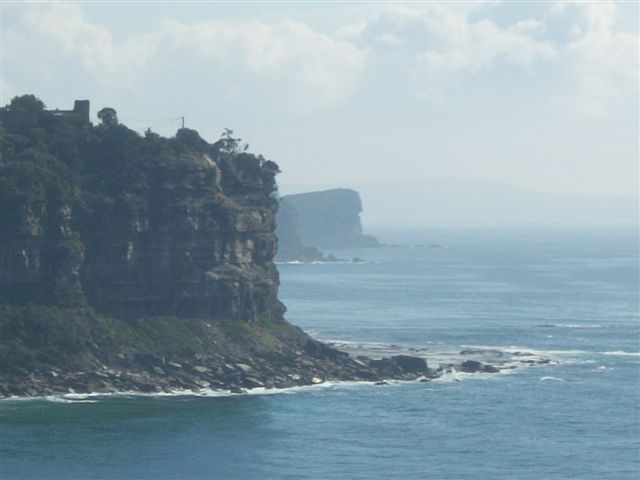
The Coastal Environment Centre (CEC) is a multi-award winning regional community environmental learning centre, and Pittwater Council's environmental flagship. CEC is celebrating its 20th year this December
More at: www.pittwater.nsw.gov.au/cec
Monthly Cooee Newsletter below. If you would like to receive Council's environmental newsletter via email, please contactjodi_harvey@pittwater.nsw.gov.au
May 2014 Cooee Newsletter includes information on: BushCare Planting Activities (volunteers needed), Workshops and Events, and great articles HERE

Central Valley sees big drop in wintertime fog needed for fruit, nut crops
May 20, 2014 - California's winter tule fog - hated by drivers, but needed by fruit and nut trees - has declined dramatically over the past three decades, raising a red flag for the state's multibillion dollar agricultural industry, according to researchers at UC Berkeley. Crops such as almonds, pistachios, cherries, apricots and peaches go through a necessary winter dormant period brought on and maintained by colder temperatures. Tule fog, a thick ground fog that descends upon the state's Central Valley between late fall and early spring, helps contribute to this winter chill.
"The trees need this dormant time to rest so that they can later develop buds, flowers and fruit during the growing season," said biometeorologist and study lead author Dennis Baldocchi, whose father grew almonds and walnuts in Antioch and Oakley. "An insufficient rest period impairs the ability of farmers to achieve high quality fruit yields."
The study was published May 15 in the journal Geophysical Research Letters, a publication of the American Geophysical Union. The findings have implications for the entire country since many of these California crops account for 95 percent of U.S. production, the authors noted.
The researchers paired NASA and National Oceanic and Atmospheric Administration satellite records with data from a network of University of California weather stations, covering 32 consecutive winters. There was a great deal of variability from year to year, but on average, the researchers found a 46 percent drop in the number of fog days between the first of November and the end of February.
"The year-to-year variability we saw was likely influenced by whether the season was relatively wet or dry," said Baldocchi, professor of Environmental Science, Policy and Management. "Generally, when conditions are too dry or too wet, we get less fog. If we're in a drought, there isn't enough moisture to condense in the air. During wet years, we need the rain to stop so that the fog can form."
Other studies have marked the decline in the Central Valley of winter chill - the number of hours between 0 and 7 degrees Celsius. The number of hours of winter chill has dropped by several hundred since the 1950s, the study authors noted.
But ambient air temperature alone may not adequately reflect the heat experienced by the crops, said Baldocchi. Direct sunlight can heat the buds so that they are warmer than the surrounding air temperature. As a result, fog is important in shielding the buds from the sun and helping them accumulate winter chill.
Climate forecasts suggest that the accumulation of winter chill will continue to decrease in the Central Valley. Baldocchi said that fruit developers are already trying to develop cultivars that can tolerate less winter chill.
"Farmers may also need to consider adjusting the location of orchards to follow the fog, so to speak," said Baldocchi. "Some regions along the foothills of the Sierra are candidates, for instance. That type of change is a slow and difficult process, so we need to start thinking about this now."
Dennis Baldocchi, Eric Waller. Winter fog is decreasing in the fruit growing region of the Central Valley of California.Geophysical Research Letters, 2014; DOI:10.1002/2014GL060018
NASA’s Terra Satellite captures wintertime tule fog as it blankets California’s Central Valley. Credit: Image courtesy of NASA
Public interest in climate change unshaken by scandal, but unstirred by science
May 20, 2014 – The good news for any passionate supporter of climate-change science is that negative media reports seem to have only a passing effect on public opinion, according to Princeton University and University of Oxford researchers. The bad news is that positive stories don't appear to possess much staying power, either. This dynamic suggests that climate scientists should reexamine how to effectively and more regularly engage the public, the researchers write.
Measured by how often people worldwide scour the Internet for information related to climate change, overall public interest in the topic has steadily waned since 2007, according to a report in the journalEnvironmental Research Letters. Yet, the downturn in public interest does not seem tied to any particular negative publicity regarding climate-change science, which is what the researchers primarily wanted to gauge.
First author William Anderegg, a postdoctoral research associate in the Princeton Environmental Institute who studies communication and climate change, and Gregory Goldsmith, a postdoctoral researcher at Oxford's Environmental Change Institute, specifically looked into the effect on public interest and opinion of two widely reported, almost simultaneous events.
The first involved the November 2009 hacking of emails from the Climate Research Unit at the University of East Anglia in the United Kingdom, which has been a preeminent source of data confirming human-driven climate change. Known as "climategate," this event was initially trumpeted as proving that dissenting scientific views related to climate change have been maliciously quashed. Thorough investigations later declared that no misconduct took place.
The second event was the revelation in late 2009 that an error in the 2007 Fourth Assessment Report of the Intergovernmental Panel on Climate Change (IPCC) - an organization under the auspices of the United Nations that periodically evaluates the science and impacts of climate change - overestimated how quickly glaciers in the Himalayas would melt.
To first get a general sense of public interest in climate change, Anderegg and Goldsmith combed the freely available database Google Trends for "global warming," "climate change" and all related terms that people around the world searched for between 2004 and 2013. The researchers documented search trends in English, Chinese and Spanish, which are the top three languages on the Internet. Google Trends receives more than 80 percent of the world's Internet search-engine activity, and it is increasingly called upon for research in economics, political science and public health.
Internet searches related to climate change began to climb following the 2006 release of the documentary "An Inconvenient Truth" starring former vice president Al Gore, and continued its ascent with the release of the IPCC's fourth report, the researchers found.
Anderegg and Goldsmith specifically viewed searches for "climategate" between Nov. 1 and Dec. 31, 2009. They found that the search trend had a six-day "half-life," meaning that search frequency dropped by 50 percent every six days. After 22 days, the number of searches for climategate was a mere 10 percent of its peak. Information about climategate was most sought in the United States, Canada and Australia, while the cities with the most searchers were Toronto, London and Washington, D.C.
The researchers tracked the popularity of the term "global warming hoax" to gauge the overall negative effect of climategate and the IPCC error on how the public perceives climate change. They found that searches for the term were actually higher the year before the events than during the year afterward.
"The search volume quickly returns to the same level as before the incident," Goldsmith said. "This suggests no long-term change in the level of climate-change skepticism.
We found that intense media coverage of an event such as 'climategate' was followed by bursts of public interest, but these bursts were short-lived."
All of this is to say that moments of great consternation for climate scientists seem to barely register in the public consciousness, Anderegg said. The study notes that independent polling data also indicate that these events had very little effect on American public opinion. "There's a lot of handwringing among scientists, and a belief that these events permanently damaged public trust. What these results suggest is that that's just not true," Anderegg said.
While that's good in a sense, Anderegg said, his and Goldsmith's results also suggest that climate change as a whole does not top the list of gripping public topics. For instance, he said, climategate had the same Internet half-life as the public fallout from pro-golfer Tiger Woods' extramarital affair, which happened around the same (but received far more searches).
A public with little interest in climate change is unlikely to push for policies that actually address the problem, Anderegg said. He and Goldsmith suggest communicating in terms familiar to the public rather than to scientists. For example, their findings suggest that most people still identify with the term "global warming" instead of "climate change," though the shift toward embracing the more scientific term is clear.
"If public interest in climate change is falling, it may be more difficult to muster public concern to address climate change," Anderegg said. "This long-term trend of declining interest is worrying and something I hope we can address soon."
One outcome of the research might be to shift scientists' focus away from battling short-lived, so-called scandals, said Michael Oppenheimer, Princeton's Albert G. Milbank Professor of Geosciences and International Affairs. The study should remind climate scientists that every little misstep or controversy does not make or break the public's confidence in their work, he said. Oppenheimer, who was not involved in the study, is a long-time participant in the IPCC and an author of the Fifth Assessment Report being released this year in sections.
"This is an important study because it puts scientists' concerns about climate skepticism in perspective," Oppenheimer said. "While scientists should maintain the aspirational goal of their work being error-free, they should be less distracted by concerns that a few missteps will seriously influence attitudes in the general public, which by-and-large has never heard of these episodes."
Anderegg, William R. L., Gregory R. Goldsmith. Public interest in climate change over the past decade and the effects of the 'climategate' media event. Environmental Research Letters, May 20, 2014
Health papers published this week:
New potential antibody treatment for asthma discovered
May 20, 2014 – Researchers at St. Joseph’s Healthcare Hamilton and McMaster University have successfully tested an antibody that can improve the quality of life for individuals with asthma by relieving inflammation in the lungs. The research was led by Dr. Gail Gauvreau, associate professor at McMaster University and Dr. Paul O’Byrne, executive director of the Firestone Institute of Respiratory Health (FIRH) at St. Joseph’s Healthcare Hamilton and chair, Department of Medicine at McMaster University. The study was published in the New England Journal of Medicine and presented at the American Thoracic Society conference in San Diego. It concluded that blocking a specific protein in the lungs with an antibody both alleviates baseline inflammation and provides resistance to allergens for those with mild allergic asthma.
“It was known that the epithelial cells which line the airways in the lungs produce a protein called thymic stromal lymphopoietin (TSLP) that causes inflammation. This study, for the first time, proved that these cells continually produce this protein in humans with asthma,” states O’Byrne. “While we studied patients with allergic asthma, this research opens the door for the development of new treatments not only for this population, but for those diagnosed with severe asthma as well.”
Individuals with allergic asthma are typically treated with inhaled corticosteroids or bronchodilators that help to control their asthma when taken regularly. While antibodies are typically reserved for severe asthma, this research can lead to antibody treatment for those who have mild allergic asthma. This study can lead to quality of life improvements for those with allergic asthma that have issues with inhalers or steroid-based medications.
The study – conducted by the Clinical Investigator Collaborative, a multi-centre, Phase II clinical trials group supported by the Allergy, Genes and Environment Network (AllerGen) – recruited 31 patients over five sites across Canada. After 12 weeks of participant monitoring, the antibodies significantly reduced baseline inflammation and protected the participants against inhaled allergens when compared to a placebo.
Established by AllerGen in 2005, the Clinical Investigator Collaborative is globally unique in its ability to undertake early stage clinical trials to evaluate the efficacy of new molecules and compounds that treat inflammation in the lung. O’Byrne, along with fellow researchers at the Firestone Institute for Respiratory Health and other Clinical Investigator Collaborative sites, continues to work closely with clinicians and patients in order to uncover the best treatments, medications and procedures which will improve the quality of life for those diagnosed with respiratory illnesses such as asthma, allergies and pulmonary disease.
Gail M. Gauvreau, Paul M. O'Byrne, Louis-Philippe Boulet, Ying Wang, Donald Cockcroft, Jeannette Bigler, J. Mark FitzGerald, Michael Boedigheimer, Beth E. Davis, Clapton Dias, Kevin S. Gorski, Lynn Smith, Edgar Bautista, Michael R. Comeau, Richard Leigh, Jane R. Parnes. Effects of an Anti-TSLP Antibody on Allergen-Induced Asthmatic Responses. New England Journal of Medicine, 2014; 140520081514000 DOI: 10.1056/NEJMoa1402895
Pregnant women respond to music with stronger physiological changes in blood pressure
May 20, 2014 - Music can be soothing or stirring, it can make us dance or make us sad. Blood pressure, heartbeat, respiration and even body temperature - music affects the body in a variety of ways. It triggers especially powerful physical reactions in pregnant women. Scientists at the Max Planck Institute for Human Cognitive and Brain Sciences in Leipzig have discovered that pregnant women compared to their non-pregnant counterparts rate music as more intensely pleasant and unpleasant, associated with greater changes in blood pressure. Music appears to have an especially strong influence on pregnant women, a fact that may relate to a prenatal conditioning of the foetus to music.
For their study, the Max Planck researchers played short musical sequences of 10 or 30 seconds' duration to female volunteers. They changed the passages and played them backwards or incorporated dissonances. By doing so, they distorted the originally lively instrumental pieces and made listening to them less pleasant.
The pregnant women rated the pieces of music slightly differently, they perceived the pleasant music as more pleasant and the unpleasant as more unpleasant. The blood pressure response to music was much stronger in the pregnant group. Forward-dissonant music produced a particularly pronounced fall in blood pressure, whereas backwards-dissonant music led to a higher blood pressure after 10 seconds and a lower one after 30 seconds. "Thus, unpleasant music does not cause an across-the-board increase in blood pressure, unlike some other stress factors," says Tom Fritz of the Max Planck Institute in Leipzig. "Instead, the body's response is just as dynamic as the music itself."
According to the results, music is a very special stimulus for pregnant women, to which they react strongly. "Every acoustic manipulation of music affects blood pressure in pregnant women far more intensely than in non-pregnant women," says Fritz. Why music has such a strong physiological influence on pregnant woman is still unknown. Originally, the scientists suspected the hormone estrogen to play a mayor part in this process, because it has an influence on the brain's reward system, which is responsible for the pleasant sensations experienced while listening to music. However, non-pregnant women showed constant physiological responses throughout the contraceptive cycle, which made them subject to fluctuations in estrogen levels. "Either estrogen levels are generally too low in non-pregnant women, or other physiological changes during pregnancy are responsible for this effect," explains Fritz.
The researchers suspect that fetuses are conditioned to music perception while still in the womb by the observed intense physiological music responses of the mothers. From 28 weeks, i.e. at the start of the third trimester of pregnancy, the heart rate of the fetus already changes when it hears a familiar song. From 35 weeks, there is even a change in its movement patterns.
Thomas Hans Fritz, Marian Ciupek, Ambika Kirkland, Klas Ihme, Anika Guha, Jana Hoyer, Arno Villringer. Enhanced response to music in pregnancy.Psychophysiology, 2014; DOI: 10.1111/psyp.12228
For pregnant smokers, vitamin C supplements improve lung function of newborn
May 19, 2014 – Supplemental vitamin C taken by pregnant smokers improved measures of lung function for newborns and decreased the incidence of wheezing for infants through 1 year, according to a study published byJAMA. The study is being released early online to coincide with its presentation at the American Thoracic Society International Conference. More than 50 percent of smokers who become pregnant continue to smoke, corresponding to 12 percent of all pregnancies. Smoking during pregnancy adversely affects lung development, with lifelong decreases in pulmonary (lung) function. At birth, newborn infants born to smokers show decreased pulmonary function test (PFT) results, with respiratory changes leading to increased hospitalization for respiratory infections, and increased incidence of childhood asthma, according to background information on the article. In a study involving primates, vitamin C blocked some of the in-utero effects of nicotine on lung development and pulmonary function in offspring.
Cindy T. McEvoy, M.D., M.C.R., of Oregon Health & Science University, Portland, and colleagues randomly assigned pregnant smokers to receive vitamin C (500 mg/d) (n = 89) or placebo (n = 90). One hundred fifty-nine newborns of pregnant smokers (76 vitamin C treated and 83 placebo treated) and 76 newborns (reference group) of pregnant nonsmokers were studied with newborn PFTs (performed within 72 hours of age)
The researchers found that newborns of women randomized to vitamin C, compared with those randomized to placebo, had improved measures of pulmonary function. Offspring of women randomized to vitamin C had significantly decreased wheezing through age 1 year (15/70 [21 percent] vs 31/77 [40 percent]. There were no significant differences in the 1-year PFT results between the vitamin C and placebo groups.
"Although smoking cessation is the foremost goal, most pregnant smokers continue to smoke, supporting the need for a pharmacologic intervention," the authors write. Other studies have demonstrated that reduced pulmonary function in offspring of smokers continues into childhood and up to age 21 years. "This emphasizes the important opportunity of in-utero intervention. Individuals who begin life with decreased PFT measures may be at increased risk for chronic obstructive pulmonary disease."
"Vitamin C supplementation in pregnant smokers may be an inexpensive and simple approach (with continued smoking cessation counseling) to decrease some of the effects of smoking in pregnancy on newborn pulmonary function and ultimately infant respiratory morbidities, but further study is required," the researchers conclude.
Editorial: Smoking During Pregnancy, Vitamin C Supplementation, and Infant Respiratory Health
"The findings from the study by McEvoy et al offer an approach for potentially minimizing the harmful effects of maternal smoking during pregnancy on the respiratory health of infants," writes Graham L. Hall, Ph.D., of the University of Western Australia, West Perth, Australia, in an accompanying editorial.
"However, achieving smoking cessation should be the primary goal for women who smoke and who intend to or become pregnant. By preventing her developing fetus and newborn infant from becoming exposed to tobacco smoke, a pregnant woman can do more for the respiratory health and overall health of her child than any amount of vitamin C may be able to accomplish."
Journal References:
Cindy T. McEvoy, Diane Schilling, Nakia Clay, Keith Jackson, Mitzi D. Go, Patricia Spitale, Carol Bunten, Maria Leiva, David Gonzales, Julie Hollister-Smith, Manuel Durand, Balz Frei, A. Sonia Buist, Dawn Peters, Cynthia D. Morris, Eliot R. Spindel.Vitamin C Supplementation for Pregnant Smoking Women and Pulmonary Function in Their Newborn Infants. JAMA, 2014; DOI:10.1001/jama.2014.5217
Graham L. Hall. Smoking During Pregnancy, Vitamin C Supplementation, and Infant Respiratory Health. JAMA, 2014; DOI: 10.1001/jama.2014.5218
Intake of dietary prenatal folate and other methyl donors in first trimester of pregnancy affects asthma risk in children at age 7
May 20, 2014 - Maternal intake of dietary methyl donors during the first trimester of pregnancy modulates the risk of developing childhood asthma at age 7, according to a new study presented at the 2014 American Thoracic Society International Conference. "Evidence on the effects of dietary methyl donor intake on childhood asthma has been mixed," said lead author Michelle Trivedi, MD, Clinical Fellow in Pediatric Pulmonology at Massachusetts General Hospital for Children in Boston. "It has been suggested that folate enrichment of some foods may have contributed to the increasing asthma and allergy prevalence in the US. In our study of more than a one thousand mother-child pairs, we found that maternal intake of the six methyl donors we studied, folate, choline, betaine, and vitamins B2, B6, and B12, had protective effects on the risk of developing childhood asthma, and that interactions between these nutrients affected the magnitude and the direction of this risk."
Methyl donors are nutrients involved in a biochemical process called methylation, in which chemicals are linked to proteins, DNA, or other molecules in the body. This process is involved in a number of important functions in the body, and dietary intake of methyl donors has been shown to affect the risk of developing a number of diseases, including heart disease and cancer.
In the current study, maternal dietary and supplemental methyl donor intake was assessed with food-frequency questionnaires in the first and second trimesters in 1,052 mother-child pairs. Of the 1,052 children, 219 (20.8%) were diagnosed with asthma at age 7.
In analyses adjusting for age, body mass index, asthma, education, and household income of the mother along with the birth weight, sex, race/ethnicity, duration of breastfeeding, exposure to environmental tobacco smoke, and eczema of the child, only dietary vitamin B12 and choline in the first trimester were associated with lower asthma prevalence at age 7. "Our results suggest that dietary intake of folate and other methyl donors during pregnancy does not increase the risk for asthma and may, in fact, decrease the risk of offspring developing asthma," said Dr. Trivedi. "Further study is warranted to dissect potential mechanisms." Dr. Trivedi's group is planning further research on the mechanisms by which folate and other methyl donors affect the methylation status of DNA.
The above story is based on materials provided by American Thoracic Society (ATS).
Chronic insufficient sleep increases obesity, overall body fat in children
May 20, 2014 - One of the most comprehensive studies of the potential link between reduced sleep and childhood obesity finds compelling evidence that children who consistently received less than the recommended hours of sleep during infancy and early childhood had increases in both obesity and in adiposity or overall body fat at age 7. The study from MassGeneral Hospital for Children (MGHfC) investigators, published in the June issue of Pediatrics, also finds no evidence of a specific period during which insufficient sleep has greater influence on later obesity.
"Our study found convincing evidence that getting less than recommended amounts of sleep across early childhood is an independent and strong risk factor for obesity and adiposity," says Elsie Taveras, MD, MPH, chief of General Pediatrics at MGHfC and lead author of the Pediatrics paper. "Contrary to some published studies, we did not find a particular 'critical period' for the influence of sleep duration on weight gain. Instead, insufficient sleep at any time in early childhood had adverse effects."
While several studies have found evidence of an association between sleep and obesity in young children, few have examined the effects of constant sleep deprivation across time or used measures other than body mass index (BMI), which determines obesity based solely on height and weight. The current study analyzed data from Project Viva, a long-term investigation of the health impacts of several factors during pregnancy and after birth. Information used in this study was gathered from mothers at in-person interviews when their children were around 6 months, 3 years and 7 years old, and from questionnaires completed when the children were ages 1, 2, 4, 5 and 6.
Among other questions, the mothers were asked how much time their children slept, both at night and during daytime naps, during an average day. Measurements taken at the seven-year visit included not only height and weight but also total body fat, abdominal fat, lean body mass, and waist and hip circumferences - measurements that may more accurately reflect cardio-metabolic health risks than BMI alone. Curtailed sleep was defined as less than 12 hours per day from ages 6 months to 2 years, less than 10 hours per day for ages 3 and 4, and less than 9 hours per day from age 5 to 7. Based on the mothers' reports at each age, individual children were assigned a sleep score covering the entire study period - from 0, which represented the highest level of sleep curtailment, to 13, indicating no reports of insufficient sleep.
Overall, children with the lowest sleep scores had the highest levels of all body measurements reflecting obesity and adiposity, including abdominal fat which is considered to be particularly hazardous. The association was consistent at all ages, indicting there was no critical period for the interaction between sleep and weight. Lower sleep scores were more common in homes with lower incomes, less maternal education and among racial and ethnic minorities; but the association between sleep and obesity/adiposity was not changed by adjusting for those and other factors.
Facts and tips for healthy sleeping habits
While more research is needed to understand how sleep duration affects body composition, Taveras notes, potential mechanisms could include the influence of sleep on hormones that control hunger and satiety; the disruptions of circadian rhythms or possible common genetic pathways involved in both sleep and metabolism; poor ability to make good decisions on food choices and eating behaviors caused by sleep deprivation, or household routines that lead to both reduced sleep and increased food consumption. Insufficient sleep may also lead to increased opportunities to eat, especially if time is spent in sedentary activities, such as TV viewing, when snacking and exposure to ads for unhealthy foods are common.
"While we need more trials to determine if improving sleep leads to reduced obesity," she says, "right now we can recommend that clinicians teach young patients and their parents ways to get a better night's sleep - including setting a consistent bedtime, limiting caffeinated beverages late in the day and cutting out high-tech distractions in the bedroom. All of these help promote good sleep habits, which also may boost alertness for school or work, improve mood and enhance the overall quality of life." Taveras is an associate professor of Pediatrics and Population Medicine at Harvard Medical School (HMS).
E. M. Taveras, M. W. Gillman, M.-M. Pena, S. Redline, S. L. Rifas-Shiman. Chronic Sleep Curtailment and Adiposity. PEDIATRICS, 2014; 133 (6): 1013 DOI:10.1542/peds.2013-3065
Screen of existing drugs finds compounds active against MERS coronavirus
May 20, 2014 - Clinicians treating patients suffering from Middle East respiratory syndrome (MERS) currently have no drugs specifically targeted to the MERS coronavirus (MERS-CoV), a virus first detected in humans in 2012 that has since caused 614 laboratory-confirmed infections, including 181 that were fatal, according to the World Health Organization. The case count escalated sharply in the spring of this year, and the first cases in the United States were announced in early May. To address the urgent need for therapies, researchers supported by the National Institutes of Health screened a set of 290 compounds already approved by the U.S. Food and Drug Administration or far advanced in clinical development for other indications to determine if any might also show potential for working against MERS-CoV. From the group of 290 compounds, the scientists identified 27 that, in test tube experiments, showed activity against both MERS-CoV and the related SARS coronavirus. These included compounds that inhibited the viruses' ability to enter and infect cells. The active compounds belong to 13 different classes of pharmaceuticals, including drugs normally used to treat cancer and psychiatric conditions, and provide leads for continued study in animals and potentially for study in people. The research team is now studying the effects of some of the identified compounds in mice experimentally infected with MERS-CoV.
"Given development times and manufacturing requirements for new products, repurposing of existing drugs is likely the only solution for outbreaks due to emerging viruses," the investigators noted in the paper now online in the journal Antimicrobial Agents and Chemotherapy. The research was a collaboration between investigators at the National Institute of Allergy and Infectious Diseases (NIAID), a part of the National Institutes of Health, and Matthew B. Frieman, Ph.D., of the University of Maryland School of Medicine in Baltimore.
J. Dyall, C. M. Coleman, B. J. Hart, T. Venkataraman, M. R. Holbrook, J. Kindrachuk, R. F. Johnson, G. G. Olinger, P. B. Jahrling, M. Laidlaw, L. M. Johansen, C. M. Lear, P. J. Glass, L. E. Hensley, M. B. Frieman. Repurposing of clinically developed drugs for treatment of Middle East Respiratory Coronavirus Infection. Antimicrobial Agents and Chemotherapy, 2014; DOI:10.1128/AAC.03036-14
Boosting Immune process with IFN-γ helps clear lethal bacteria in cystic fibrosis
May 20, 2014 - Boosting a key immune process called autophagy with interferon gamma (IFN-γ) could help clear a lethal bacterial infection in cystic fibrosis, a new study suggests. The work, led by a team in The Research Institute at Nationwide Children's Hospital and published in PLoS One in May, offers new information about immune function in patients with the disease.
Cystic fibrosis, CF for short, is caused by a malfunction in the CFTR gene, which is responsible for transporting chloride and water across cell membranes. In people with the disease, cells that line the passageways of the lungs, pancreas and other organs produce unusually thick and sticky mucus that clogs the airways - creating an ideal environment for pathogens such as Burkholderia cenocepacia.
A member of the Burkholderia cepacia group of bacteria, B. cenocepacia is commonly found in soil and water and in most cases poses no health threat. However, in 2 to 5 percent of patients with CF, the bacterium causes an infection that can spread to the bloodstream, triggering widespread inflammation called sepsis that can be fatal. B. cenocepacia doesn't respond to most antibiotics, leaving physicians with few weapons to fight it. And even if their infection isn't severe, patients with B. cenocepacia are considered poor candidates for lung transplant, which many advanced CF patients require to survive.
"B. cenocepacia is multi-drug resistant, so usually when patients are ill, they are on a cocktail of antibiotics and we're hoping for a synergy of effect," said Benjamin T. Kopp, MD, senior author of the study and a principal investigator for the Center for Microbial Pathogenesis and a pulmonologist at Nationwide Children's.
Further complicating these infections, he adds, is that B. cenocepacia can replicate inside macrophages, the immune system's first line of defense against such pathogens. "It can avoid the host immune response," he said, "and that's where something like IFN-γ might work better than traditional antibiotics."
Produced by the IFNG gene in humans, IFN-γ is a cytokine active in the immune system. Earlier studies suggested that the molecule stimulates autophagy, a natural process in which proteins and other cell materials are degraded and disposed. In many diseases, including CF, autophagy is inhibited. Dr. Kopp and his colleagues wanted to see if treatment with IFN-γ might activate autophagy, allowing the body's immune system to battle B. cenocepacia.
Researchers isolated macrophages from patients with and without CF and infected them with B. cenocepacia in cell cultures. When they analyzed the samples, they found that the cells from CF patients had decreased levels of IFN-γ. They then treated the CF macrophages with synthetic IFN-γ and found that autophagy was enhanced and the bacterial infection waned.
"The goal of the study was to show if you could stimulate autophagy, you could help clear pathogens better," said Dr. Kopp, who also is an assistant professor of pediatrics at The Ohio State University College of Medicine. "These findings clearly suggest that is indeed the case."
The study is the first in a series by Dr. Kopp and colleagues to look at autophagy mediation, a growing area of interest among clinician scientists who study CF and other disorders that affect the immune system. In CF, the need for new treatments is great. Many of the infections that plague this patient population are resistant to available drugs and some of the drugs that do work have side effects that leave many physicians unwilling to prescribe them.
"As we're learning more about CF, we're finding more and more issues with the immune system and not just the typical clearance of mucus," Dr. Kopp said. "Now we're discovering that there is this initial response, of which autophagy is a part, in which the immune system is not clearing the bacteria and there are some continued deficits in that in CF patients."
According to the Centers for Disease Control and Prevention, B. cenocepaciainfections have also been reported in hospitalized patients with compromised immune systems. So, Dr. Kopp added, the findings could be of interest to clinician-scientists in areas other than cystic fibrosis.
Kaivon Assani, Mia F. Tazi, Amal O. Amer, Benjamin T. Kopp. IFN-γ Stimulates Autophagy-Mediated Clearance of Burkholderia cenocepacia in Human Cystic Fibrosis Macrophages. PLoS ONE, 2014; 9 (5): e96681 DOI:10.1371/journal.pone.0096681
'Encouraging' period of stable disease suggested in direct injection vaccine treatment of pancreatic cancer
May 20, 2014 - Research from Rutgers Cancer Institute of New Jersey shows that the 'first in man' series of vaccine injections given directly into a pancreatic cancer tumor is not only well tolerated, but also suggests an "encouraging" period of stable disease. Results from a Phase I clinical trial conducted at the Cancer Institute of New Jersey are being given as part of a poster presentation at the American Association for Cancer Research (AACR) Pancreatic Cancer: Innovations in Research and Treatment conference being held in New Orleans this week.
Vaccine therapies are designed to strengthen the body's immune defenses and are typically given in the arm or leg. In a previous study, investigators at the Cancer Institute showed that using a vaccine treatment for bladder and breast cancer tumors in laboratory models resulted in a reversal of the traditional immune blockade, as well as the development of tumor specific immunity throughout the body. This tumor specific immunity showed the potential of blocking the growth of the original tumor as well as eliminating small tumor deposits that can cause the cancer to spread. Building on this research, investigators further tested this vaccine in a direct injection method in patients who were not candidates for surgery to remove their cancer. The Cancer Institute's Associate Director for Education and Training Edmund Lattime, PhD, who is also a professor of surgery at Rutgers Robert Wood Johnson Medical School, and Elizabeth Poplin, MD, co-director of the Cancer Institute's Gastrointestinal/Hepatobiliary Program and a professor of medicine at Robert Wood Johnson Medical School are the lead investigators of the study.
The focus of the research is the investigational vaccine known as PANVAC. PANVAC contains gene additives that might stimulate a person's immune system to recognize and develop an immune response to the disease. Two types of PANVAC were utilized in this trial. PANVAC-V, which uses the same virus as the smallpox vaccine, is a live but weakened vaccinia vaccine (meaning the virus can still multiply) that is given in the arm. PANVAC-F (a live Fowlpox virus that cannot multiply) is injected into the tumor itself and subsequently into the arm as a booster. Direct tumor injection takes place through an endoscopic ultrasound, in which a scope is inserted through the mouth and into the stomach so that the tumor in the pancreas can be seen.
During the first phase of the study, patients were evaluated for toxicity, tumor progression and the presence of tumor markers for pancreatic cancer. Two patients were removed from the first part of the study after two weeks due to rapid disease progression; one died six months after first being placed on the trial and the other after one month. The second part of the trial involved giving a higher dosage of PANVAC-F during direct injection of the tumor. During this phase, one patient was removed due to rapid disease progression and died one month after, while a second patient withdrew and died after 16 months.
Of the remaining 10 patients from both dose levels, three were shown to have distant metastatic disease with a survival range of six to 22 months. The other seven patients presented without distant metastasis with a survival range of four to 36 months. Of this latter group, none developed disease that spread beyond the original tumor into other organs but instead died of a secondary condition associated with locally progressive pancreas cancer. All but one of the ten patients transitioned to treatment with gemcitabine, which is a standard therapy for pancreas cancer. A series of genetic analyses for day one and day 14 patient immune responses is currently being examined.
"While the median survival rate for patients without distant metastasis was nearly a year-and-a-half with this treatment, there was one patient whose disease remained clinically stable for nearly three years. When you have a disease that only carries a five-year, six percent survival rate, these findings are very encouraging and will hopefully lead to more effective ways of managing and treating this disease," note the researchers.
The above story is based on materials provided by Rutgers Cancer Institute of New Jersey.
Disclaimer: These articles are not intended to provide medical advice, diagnosis or treatment. Views expressed here do not necessarily reflect those of Pittwater Online News or its staff.